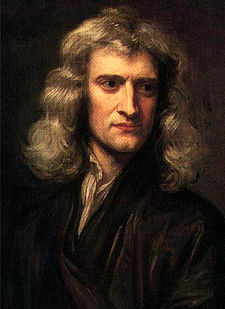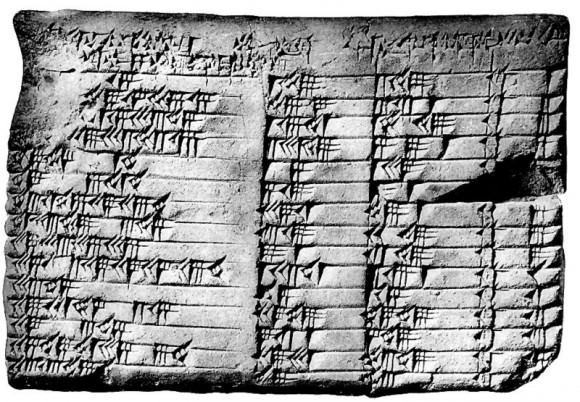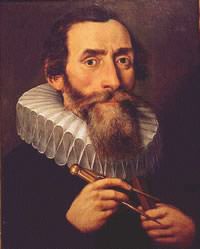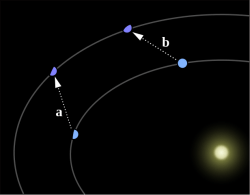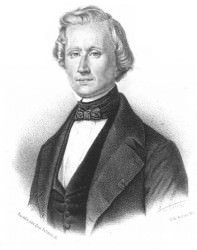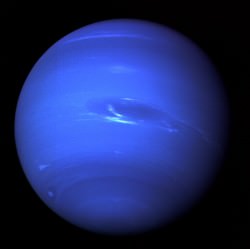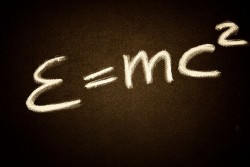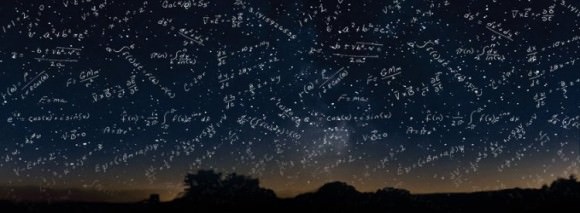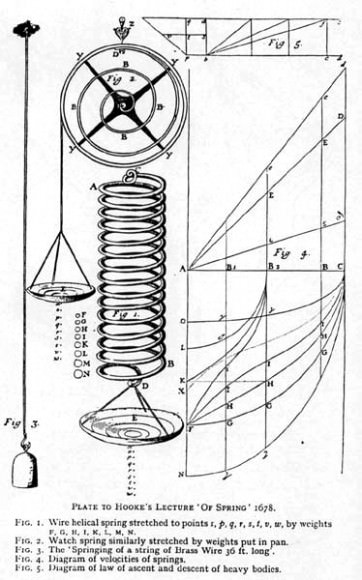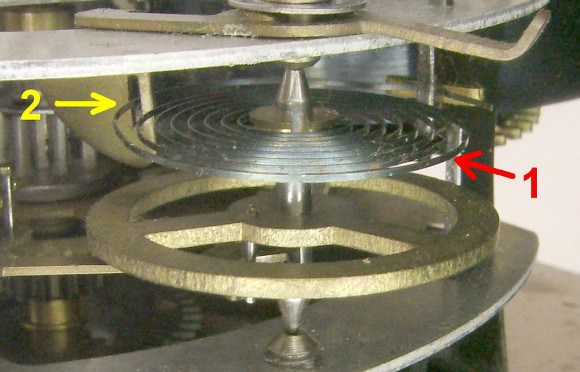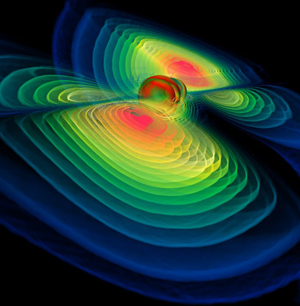The 17th century was an auspicious time for the sciences, with groundbreaking discoveries being made in astronomy, physics, mechanics, optics, and the natural sciences. At the center of all this was Sir Isaac Newton, the man who is widely recognized as being one of the most influential scientists of all time and as a key figure in the Scientific Revolution.
An English physicist and mathematician, Newton made several seminal contributions to the field of optics, and shares credit with Gottfried Leibniz for the development of calculus. But it was Newton’s publication of Philosophiæ Naturalis Principia Mathematica (“Mathematical Principles of Natural Philosophy”), for which he is most famous. Published in 1687, this treatise laid the foundations for classical mechanics, a tradition which would dominate scientists’ view of the physical universe for the next three centuries.
Early Life:
Isaac Newton was born on January 4th, 1643, – or December 25th, 1642 according to the Julian Calendar (which was in use in England at the time) – in Woolsthorpe-by-Colsterworth, a hamlet in the county of Lincolnshire. His father, for whom he was named, was a prosperous farmer who had died three months before his birth. Having been born prematurely, Newton was small as a child.
His mother, Hannah Ayscough, remarried when he was three to a Reverend, leaving Newton in the care of his maternal grandmother. His mother would go on to have three more children with her new husband, which became Newton’s only siblings. Because of this, Newton apparently had a rocky relationship with his stepfather and mother for some time.
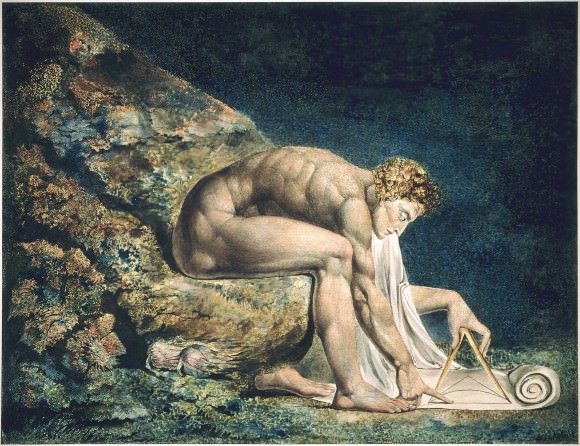
By the time Newton was 17, his mother was widowed again. Despite her hopes that Newton would become a farmer, like his father, Newton hated farming and sought to become an academic. His interests in engineering, mathematics and astronomy were evident from an early age, and Newton began his studies with an aptitude for learning and inventing that would last for the rest of his life.
Education:
Between the ages of 12 and 21, Newton was educated at The King’s School, Grantham, where he learned Latin. While there, he became the top-ranked student, and received recognition for his building of sundials and models of windmills. By 1661, he was admitted to Trinity College, Cambridge, where he paid his way by performing a valet’s duties (what was known as a subsizar).
During his first three years at Cambridge, Newton was taught the standard curriculum, which was based on Aristotelian theory. But Newton was fascinated with the more advanced science and spent all his spare time reading the works of modern philosophers and astronomers, such as René Descartes, Galileo Galilei, Thomas Street, and Johannes Kepler.
The result was a less-than-stellar performance, but his dual focus would also lead him to make some of his most profound scientific contributions. In 1664, Newton received a scholarship, which guaranteed him four more years until he would get his Masters of Arts degree.
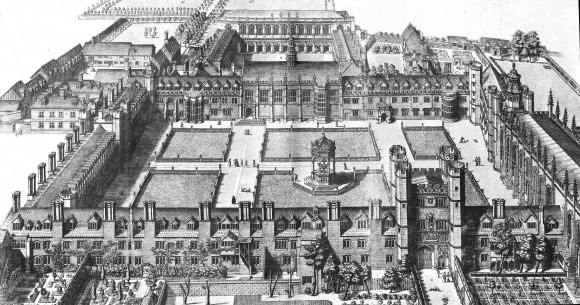
In 1665, shortly after Newton obtained his B.A., the university temporarily closed due to the outbreak of the Great Plague. Using this time to study at home, Newton developed a number of ideas he had which would eventually cement to become his theories on calculus, optics and the law of gravitation (see below).
In 1667, he returned to Cambridge and was elected as a fellow of Trinity, though his performance was still considered less than spectacular. However, in time, his fortunes improved and he gained recognition for his abilities. In 1669, he received his M.A. (before he had turned 27), and published a treatise expounding on his mathematical theories for dealing with infinite series.
By 1669, he succeeded his one-time teacher and mentor Isaac Barrow – a theologian and mathematician who discovered the fundamental theorem of calculus – and became the Lucasian Chair of Mathematics at Cambridge. In 1672, he was elected a Fellow of the Royal Society, which he would remain a part of until the end of his life.
Scientific Achievements:
While studying at Cambridge, Newton maintained a second set of notes which he entitled “Quaestiones Quaedam Philosophicae” (“Certain Philosophical Questions“). These notes, which were the sum total of Newton’s observations about mechanical philosophy, would lead him to discover the generalized binomial theorem in 1665, and allowed him to develop a mathematical theory that would lead to his development of modern calculus.
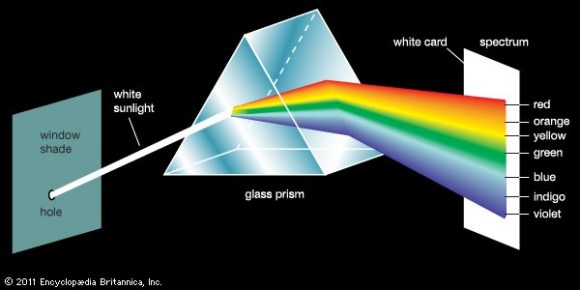
However, Newton’s earliest contributions were in the form of optics, which he delivered during annual lectures while holding the position of Lucasian Chair of Mathematics. In 1666, he observed that light entering a prism as a circular ray exits in the form of an oblong, demonstrating that a prism refracts different colors of light at different angles. This led him to conclude that color is a property intrinsic to light, a point which had been debated in prior years.
In 1668, he designed and constructed a reflecting telescope, which helped him prove his theory. From 1670 to 1672, Newton continued to lecture on optics and investigated the refraction of light, demonstrating that the multicoloured spectrum produced by a prism could be recomposed into white light by a lens and a second prism.
He also demonstrated that colored light does not change its properties, regardless of whether it is reflected, scattered, or transmitted. Thus, he observed that color is the result of objects interacting with already-colored light, rather than objects generating the color themselves. This is known as Newton’s theory of color.
The Royal Society asked for a demonstration of his reflecting telescope in 1671, and the organization’s interest encouraged Newton to publish his theories on light, optics and color. This he did in 1672 in a small treatise entitled Of Colours, which would later be published in a larger volume containing his theories on the “corpuscular” nature of light.
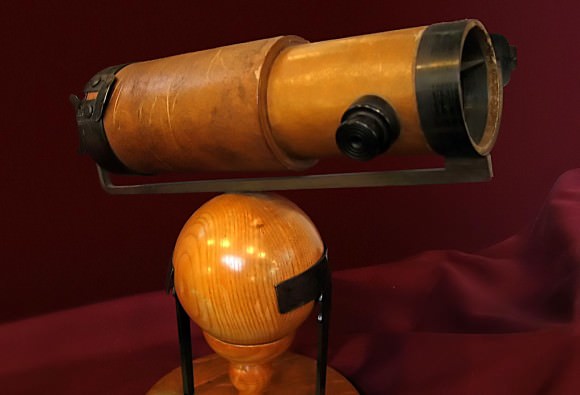
In essence, Newton argued that light was composed of particles (or corpuscles), which he claimed were refracted by accelerating into a denser medium. In 1675, he published this theory in a treatise titled “Hypothesis of Light“, in which he also posited that ordinary matter was composed of larger corpuscles and about the existence of an ether that transmitted forces between particles.
After discussing his ideas with Henry More, an English theosophist and a member of the Cambridge Platonists, Newton’s interest in alchemy was revived. He then replaced his theory of an ether existing between particles in nature with occult forces, based on Hermetic ideas of attraction and repulsion between particles. This reflected Newton’s ongoing interest in both the alchemical and scientific, for which there was no clear distinction at the time.
In 1704, Newton published all of his theories on light, optics and colors into a single volume entitled Opticks: Or, A treatise of the Reflections, Refractions, Inflections and Colours of Light. In it, he speculated that light and matter could converted into one another through a kind of alchemical transmutation, and verged on theories of sound waves in order to explain repeated patterns of reflection and transmission.
While later physicists favored a purely wavelike explanation of light to account for the interference patterns and the general phenomenon of diffraction, their findings owed a great deal to Newton’ theories. Much the same is true of today’s quantum mechanics, photons, and the idea of wave–particle duality, which bear only a small resemblance to Newton’s understanding of light.
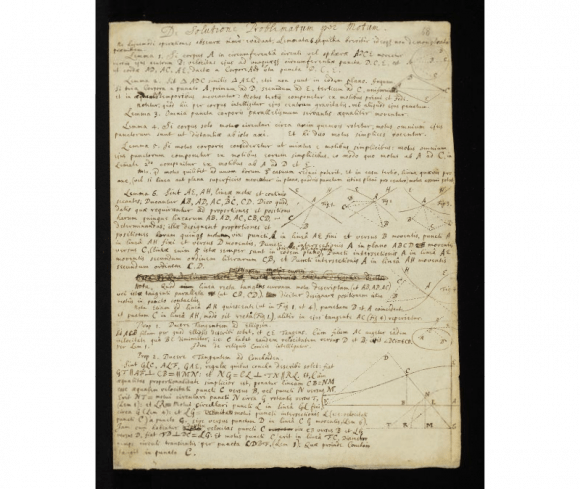
Excerpt from Newton’s “Quaestiones Quaedam Philosophicae”, a collection of observations that would lead to his development of modern calculus. Credit: newtonproject.sussex.ac.uk
Though both he and Leibniz are credited with having developed calculus independently, both men became embroiled in a controversy over who discovered it first. Though Newton’s work in developing modern calculus began in the 1660s, he was reluctant to publish it, fearing controversy and criticism. As such, Newton didn’t publish anything until 1693 and did not give a full account of his work until 1704, whereas Leibniz began publishing a full account of his methods in 1684.
However, Newton earlier works in mechanics and astronomy involved extensive use of calculus in geometric form. This includes methods involving “one or more orders of the infinitesimally small” in his 1684 work, De motu corporum in gyrum (“On the motion of bodies in orbit”), and in Book I of the Principia, which he referred to as “the method of first and last ratios”.
Universal Gravitation:
In 1678, Newton suffered a complete nervous breakdown, most likely due to overwork and an ongoing feud with fellow Royal Society member Robert Hooke (see below). The death of his mother a year later caused him to become increasingly isolated, and for six years he withdrew from correspondence with other scientists, except where they initiated it.
During this hiatus, Newton renewed his interest in mechanics and astronomy. Ironically, it was thanks to a brief exchange of letters in 1679 and 1680 with Robert Hooke that would lead him to make his greatest scientific achievements. His reawakening was also due to the appearance of a comet in the winter of 1680–1681, about which he corresponded with John Flamsteed – England’s Astronomer Royal.
Thereafter, Newton began considering gravitation and its effect on the orbits of planets, specifically with reference to Kepler’s laws of planetary motion. After his exchanges with Hooke, he worked out proof that the elliptical form of planetary orbits would result from a centripetal force inversely proportional to the square of the radius vector.
Newton communicated his results to Edmond Halley (discoverer of “Haley’s Comet”) and to the Royal Society in his De motu corporum in gyrum. This tract, published in 1684, contained the seed that Newton would expand to form his magnum opus, the Principia. This treatise, which was published in July of 1687, contained Newton’s three laws of motion. These laws stated that:
- When viewed in an inertial reference frame, an object either remains at rest or continues to move at a constant velocity, unless acted upon by an external force.
- The vector sum of the external forces (F) on an object is equal to the mass (m) of that object multiplied by the acceleration vector (a) of the object. In mathematical form, this is expressed as: F=ma
- When one body exerts a force on a second body, the second body simultaneously exerts a force equal in magnitude and opposite in direction on the first body.
Together, these laws described the relationship between any object, the forces acting upon it and the resulting motion, laying the foundation for classical mechanics. The laws also allowed Newton to calculate the mass of each planet, calculate the flattening of the Earth at the poles and the bulge at the equator, and how the gravitational pull of the Sun and Moon create the Earth’s tides.
In the same work, Newton presented a calculus-like method of geometrical analysis using ‘first and last ratios’, worked out the speed of sound in air (based on Boyle’s Law), accounted for the precession of the equinoxes (which he showed were a result of the Moon’s gravitational attraction to the Earth), initiated the gravitational study of the irregularities in the motion of the moon, provided a theory for the determination of the orbits of comets, and much more.
This volume would have a profound effect on the sciences, with its principles remaining canon for the following 200 years. It also informed the concept of universal gravitation, which became the mainstay of modern astronomy, and would not be revised until the 20th century – with the discovery of quantum mechanics and Einstein’s theory of General Relativity.
Newton and the “Apple Incident”:
The story of Newton coming up with his theory of universal gravitation as a result of an apple falling on his head has become a staple of popular culture. And while it has often been argued that the story is apocryphal and Newton did not devise his theory at any one moment, Newton himself told the story many times and claimed that the incident had inspired him.
In addition, the writing’s of William Stukeley – an English clergyman, antiquarian and fellow member of the Royal Society – have confirmed the story. But rather than the comical representation of the apple striking Netwon on the head, Stukeley described in his Memoirs of Sir Isaac Newton’s Life (1752) a conversation in which Newton described pondering the nature of gravity while watching an apple fall.
“…we went into the garden, & drank thea under the shade of some appletrees; only he, & my self. amidst other discourse, he told me, he was just in the same situation, as when formerly, the notion of gravitation came into his mind. “why should that apple always descend perpendicularly to the ground,” thought he to himself; occasion’d by the fall of an apple…”
John Conduitt, Newton’s assistant at the Royal Mint (who eventually married his niece), also described hearing the story in his own account of Newton’s life. According to Conduitt, the incident took place in 1666 when Newton was traveling to meet his mother in Lincolnshire. While meandering in the garden, he contemplated how gravity’s influence extended far beyond Earth, responsible for the falling of apple as well as the Moon’s orbit.

Similarly, Voltaire wrote n his Essay on Epic Poetry (1727) that Newton had first thought of the system of gravitation while walking in his garden and watching an apple fall from a tree. This is consistent with Newton’s notes from the 1660s, which show that he was grappling with the idea of how terrestrial gravity extends, in an inverse-square proportion, to the Moon.
However, it would take him two more decades to fully develop his theories to the point that he was able to offer mathematical proofs, as demonstrated in the Principia. Once that was complete, he deduced that the same force that makes an object fall to the ground was responsible for other orbital motions. Hence, he named it “universal gravitation”.
Various trees are claimed to be “the” apple tree which Newton describes. The King’s School, Grantham, claims their school purchased the original tree, uprooted it, and transported it to the headmaster’s garden some years later. However, the National Trust, which holds the Woolsthorpe Manor (where Newton grew up) in trust, claims that the tree still resides in their garden. A descendant of the original tree can be seen growing outside the main gate of Trinity College, Cambridge, below the room Newton lived in when he studied there.
Feud with Robert Hooke:
With the Principia, Newton became internationally recognized and acquired a circle of admirers. It also led to a feud with Robert Hooke, with whom he had a troubled relationship in the past. With the publication of his theories on color and light in 1671/72, Hooke criticized Newton in a rather condescending way, claiming that light was composed of waves and not colors.
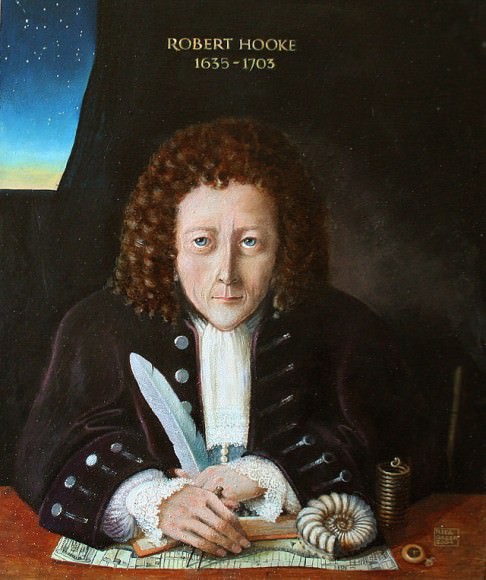
While other philosophers were critical of Newton’s idea, it was Hooke (a member of the Royal Society who had performed extensive work in optics) that stung Newton the worst. This led to the acrimonious relationship between the two men, and to Newton almost quitting the Royal Society. However, the intervention of his colleagues convinced him to stay on and the matter eventually died down.
However, with the publication of the Principia, matters once again came to a head, with Hooke accusing Newton of plagiarism. The reason for the charge had to do with the fact that earlier in 1684, Hooke had made comments to Edmond Halley and Christopher Wren (also members of the Royal Society) about ellipses and the laws of planetary motion. However, at the time he did not offer a mathematical proof.
Nevertheless, Hooke claimed that he had discovered the theory of inverse squares and that Newton had stolen his work. Other members of the Royal Society believed the charge to be unfounded, and demanded that Hooke release the mathematical proofs to substantiate this claim. In the meantime, Newton removed all reference to Hooke in his notes and threatened to withdraw the Principia from subsequent publishing altogether.
Edmund Halley, who was a friend to both Newton and Hooke, tried to make peace between the two. In time, he was able to convince Newton to insert a joint acknowledgement of Hooke’s work in his discussion of the law of inverse squares. However, this did not placate Hooke, who maintained his charge of plagiarism.
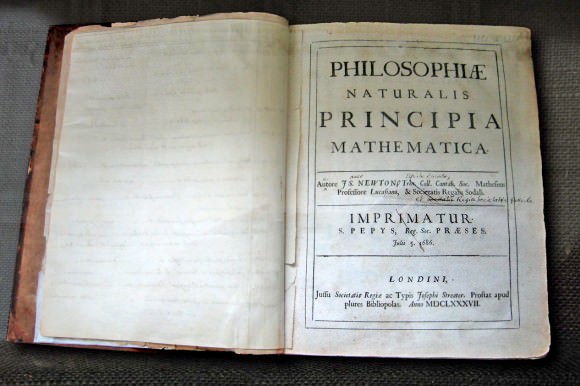
As time moved on, Newton’s fame continued to grow while Hooke’s continued to diminish. This caused Hooke to become increasingly embittered and more protective of what he saw as his work, and he spared no opportunity to lash out at his rival. The feud finally ended in 1703, when Hooke died and Newton succeeded him as president of the Royal Society.
Other Accomplishments:
In addition to his work in astronomy, optics, mechanics, physics and alchemy, Newton also had a keen interest in religion and the Bible. During the 1690’s, he wrote several religious tracts that addressed literal and symbolic interpretations of the Bible. For instance, his tract on the Holy Trinity – sent to the famous political philosopher and social theorist John Locke and unpublished until 1785 – questioned the veracity of 1 John 5:7, the description which the Holy Trinity is based on.
Later religious works – like The Chronology of Ancient Kingdoms Amended (1728) and Observations Upon the Prophecies of Daniel and the Apocalypse of St. John (1733) – also remained unpublished until after his death. In Kingdoms, he dealt with the chronology of various ancient kingdoms – the First Ages of the Greeks, ancient Egyptians, Babylonians, Medeans and Persians – and offered a description of the Temple of Solomon.
In Prophecies, he addressed the Apocalypse, as foretold within the Book of Daniel and Revelations, and espoused his belief that it would take place in 2060 CE (though other possible dates included 2034 CE). In his textual criticism titled An Historical Account of Two Notable Corruptions of Scripture (1754), he placed the crucifixion of Jesus Christ on April 3rd, AD 33, which agrees with a traditionally accepted date.
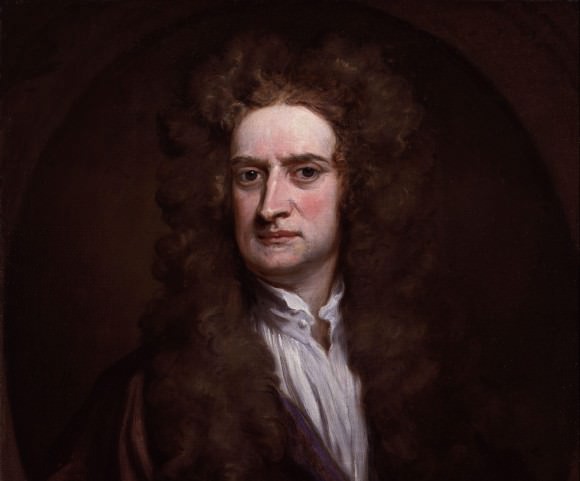
In 1696, he moved to London to take up the post of warden of the Royal Mint, where he took charge of England’s great recoining. Newton would remain in this post for 30 years, and was perhaps the best-known Master of the Mint. So serious was his commitment to the role that he retired from Cambridge in 1701 to oversee the reform of England’s currency and the punishment of counterfeiters.
As Warden, and afterwards Master, of the Royal Mint, Newton estimated that 20 percent of the coins taken in during the Great Recoinage of 1696 were counterfeit. Conducting many investigations personally, Newton traveled to taverns and bars in disguise to gather evidence, and conducted more than 100 cross-examinations of witnesses, informers, and suspects – which led to the successful prosecution of 28 counterfeit coiners.
Newton was a member of the Parliament of England for Cambridge University in 1689–90 and 1701–2. In addition to being President of the Royal Society in 1703, he was an associate of the French Académie des Sciences. In April 1705, Queen Anne knighted Newton during a royal visit to Trinity College, Cambridge, making him the second scientist to be knighted (after Sir Francis Bacon).
Death and Legacy:
Towards the end of his life, Newton took up residence at Cranbury Park near Winchester with his niece and her husband, where he would stay until his death. By this time, Newton had become one of the most famous men in Europe and his scientific discoveries were unchallenged. He also had become wealthy, investing his sizable income wisely and bestowing sizable gifts to charity.
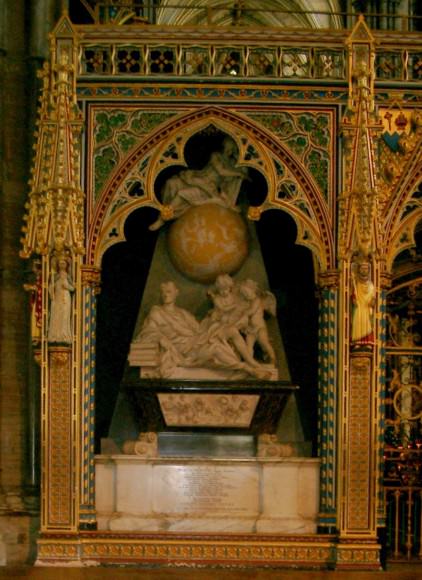
At the same time, Newton’s physical and mental health began to decline. By the time he reached 80 years of age, he began experiencing digestive problems and had to drastically change his diet and lifestyle. His family and friends also began to worry about his mental stability, as his behavior became increasingly erratic.
Then, in 1727, Newton experienced severe pain in his abdomen and lost consciousness. He died in his sleep on the next day, on March 2oth, 1727 (Julian Calendar; or March 31st, 1727, Gregorian Calendar) at the age of 84. He was buried in tomb at Westminster Abbey. And as a bachelor, he had divested much of his estate to relatives and charities during his final years.
After his death, Newton’s hair was examined and found to contain mercury, probably resulting from his alchemical pursuits. Mercury poisoning has been cited as a reason for Newton’s eccentricity in later life, as well as the nervous breakdown he experienced in 1693. Isaac Newton’s fame grew even more after his death, as many of his contemporaries proclaimed him to be the greatest genius who ever lived.
These claims were not without merit, as his laws of motion and theory of universal gravitation were unparalleled in his the time. In addition to being able to bring the orbits of the planets, the Moon, and even comets into one coherent and predictable system, he also invented modern calculus, revolutionized our understanding of light and optics, and established scientific principles that would remain in use for the following 200 years.
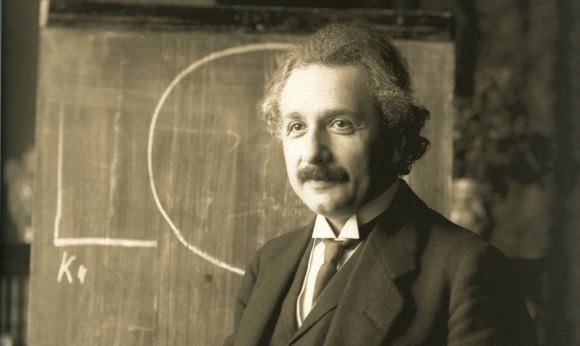
In time, much of what Newton espoused would be proven wrong, thanks largely to Albert Einstein. With his General Theory of Relativity, Einstein would prove that time, distance and motion were not absolutes, but dependent on the observer. In so doing, he overturned one of the fundamental precepts of universal gravitation. Nevertheless, Einstein was one of Newton’s greatest admirers and acknowledged a great debt to his predecessor.
In addition to calling Newton a “shining spirit” (in a eulogy delivered in 1927 on the 200th anniversary of Newton’s death), Einstein also remarked that “Nature to him was an open book, whose letters he could read without effort.” On his study wall, Albert Einstein is said to have kept a picture of Newton, alongside pictures of Michael Faraday and James Clerk Maxwell.
A survey of Britain’s Royal Society was also conducted in 2005, where members were asked who had the greater effect on the history of science: Newton or Einstein. The majority of the Royal Society’s members agreed that overall, Newton had a greater impact on the sciences. Other polls conducted in recent decades have produced similar results, with Einstein and Newton vying for first and second place.
It is not easy thing to be living during one of the most auspicious times in history. Moreover, it is not easy in the midst of all of that to be blessed with an insight that will lead one to comes up with ideas that will revolutionize the sciences and forever alter the course of history. But throughout it all, Newton maintained a humble attitude, and summarized his accomplishments best with the famous words: “If I have seen further it is by standing on the shoulders of giants.“
We have written many articles about Isaac Newton for Universe Today. Here’s an article about what Isaac Newton discovered, and here’s an article about the inventions of Isaac Newton.
Astronomy Cast also has a wonderful episode, titled Episode 275: Isaac Newton
For more information, check out this article from the Galileo Society on Isaac Newton, and the non-profit group known as The Newton Project.
We’ve also recorded an entire episode of Astronomy Cast all about Gravity. Listen here, Episode 102: Gravity.

